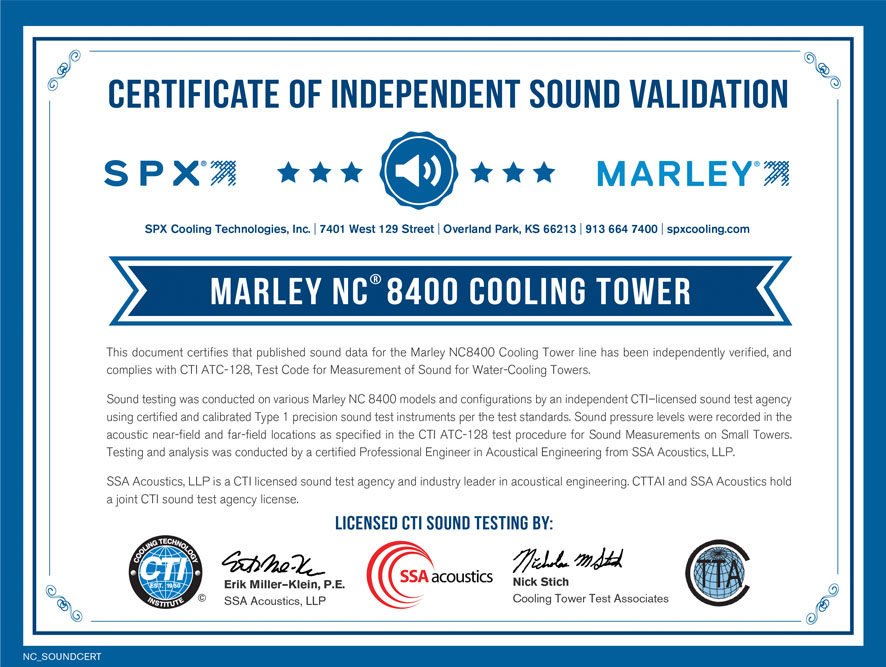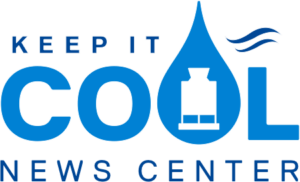
Schallprüfungen durch Dritte sind zur Überprüfung des Geräuschpegels unerlässlich, da veröffentlichte Schalldaten oft verwirrend sind und Produktplaner und Endbenutzer in die Irre führen können. Die städtische und industrielle Entwicklung nimmt weltweit weiter zu, was zu einer wachsenden Zahl von Lärmschutzbestimmungen führt. Als Reaktion darauf bemühen sich Gebäudeplaner und -eigentümer, „gute Unternehmensbürger“ zu sein, indem sie leisere HLK-Geräte, einschließlich Kühltürme, identifizieren.
Es gibt keine einheitliche, universelle Methode zur Beschreibung des Kühlturmschalls. Schalldruckpegel oder Schallleistungspegel Messungen – oder eine Kombination aus beiden – können verwendet werden. Ungenaue Schalldaten von Kühltürmen sind keine Seltenheit. Beispiele hierfür sind die Berechnung des Schallleistungspegels nur einer Zelle eines Mehrzellenturms oder die Berücksichtigung des von fallendem Wasser erzeugten Schalls. Darüber hinaus können Umgebungsgeräusche vor Ort Messungen vor Ort beeinträchtigen.
Wie können Kühlturmnutzer überprüfen, ob die angegebenen Schallpegel zulässig sind? Der vom Cooling Technology Institute (CTI) entwickelte Testcode ATC-128 bietet eine Methode zur Instrumentierung, Messung und Bewertung von Schalldruck- und Schallleistungspegeln. Durch die Vorgabe, dass Kühltürme von einem CTI-lizenzierten Schallberater und Akustikingenieur unabhängig getestet werden müssen, werden irreführende Schallpegelangaben zur Ausnahme.

